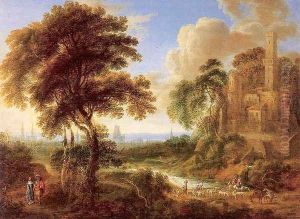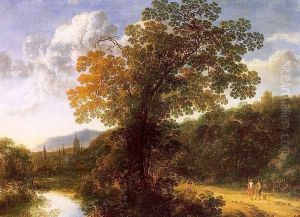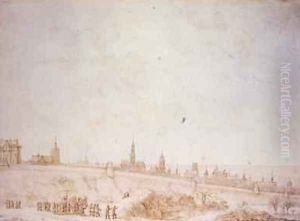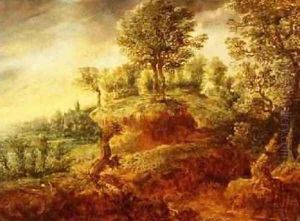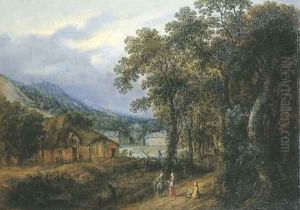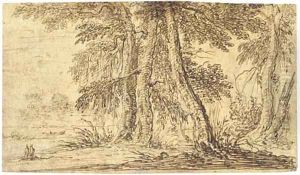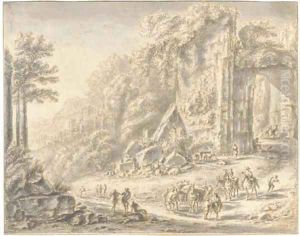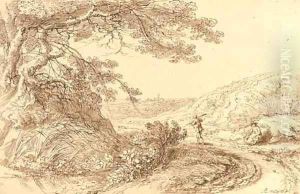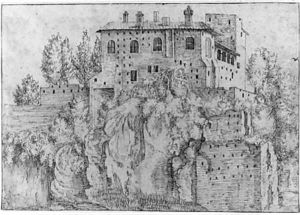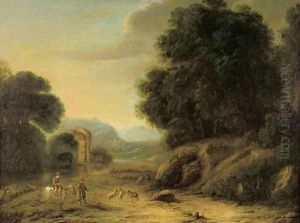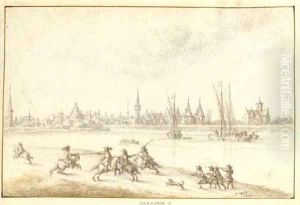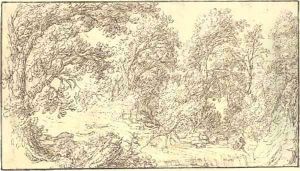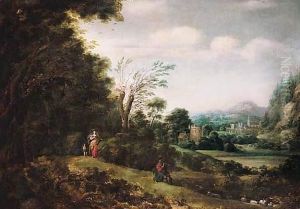Gilles Neyts Paintings
Gilles Neyts, a somewhat lesser-known figure in the grand panorama of art history, was a Flemish painter born in 1623 in Ghent, then part of the Spanish Netherlands. His work is often overshadowed by the more prominent artists of his time, but Neyts was a unique talent in his own right, particularly noted for his landscapes and cityscapes.
Neyts' artistic journey began in his hometown, where he was initially taught by his father, who was also a painter. This early education set the foundation for his artistic development. He was later apprenticed to Lucas Franchoys the Younger, a painter from Mechelen, which significantly shaped his style and approach to art. Despite the influence of his teachers, Neyts developed a distinctive style that set him apart from his contemporaries.
His work is characterized by meticulous attention to detail, with a particular focus on the interplay of light and shadow. Neyts was adept at capturing the essence of the landscapes and city scenes he painted, imbuing them with a sense of realism that was quite advanced for his time. He often depicted the countryside of Flanders, showcasing its natural beauty and the daily life of its inhabitants with a delicate touch.
In addition to landscapes, Neyts was also known for his architectural paintings. He had a keen eye for perspective, which allowed him to create intricate and accurate representations of buildings and city layouts. This skill made his work highly sought after, particularly for clients interested in having their estates or properties immortalized on canvas.
Despite his talents, Gilles Neyts never achieved the level of fame enjoyed by some of his contemporaries. However, his contributions to the Flemish art scene of the 17th century have not gone unnoticed. Scholars and art enthusiasts continue to study his work, appreciating his unique approach to landscape and architectural painting. Neyts' paintings are now considered valuable examples of Flemish art from this period, with some of them housed in museums and private collections around the world.
Gilles Neyts passed away in 1687, leaving behind a modest but significant body of work. His paintings continue to be appreciated for their beauty, attention to detail, and historical value, providing insight into the landscape and architecture of 17th-century Flanders. Neyts' legacy, though not as well-known as some of his peers, is a testament to the diversity and richness of Flemish art during this era.
